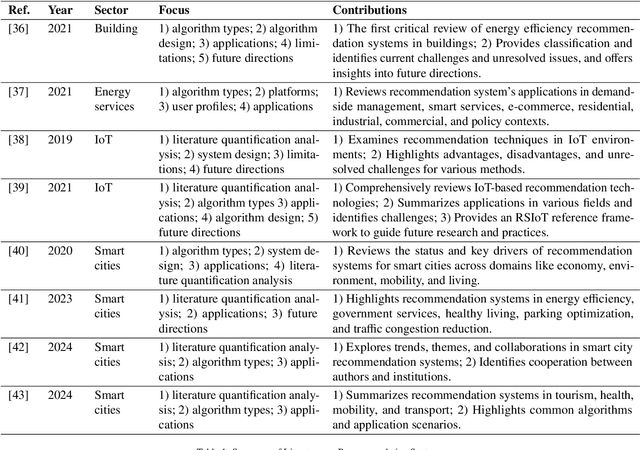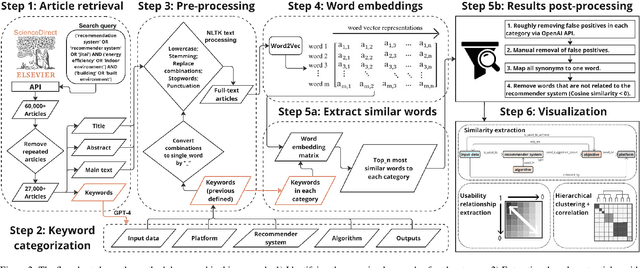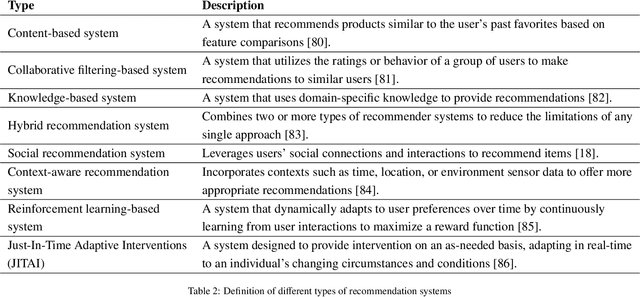Wenhao Zhang
DiSE: A diffusion probabilistic model for automatic structure elucidation of organic compounds
Oct 30, 2025Abstract:Automatic structure elucidation is essential for self-driving laboratories as it enables the system to achieve truly autonomous. This capability closes the experimental feedback loop, ensuring that machine learning models receive reliable structure information for real-time decision-making and optimization. Herein, we present DiSE, an end-to-end diffusion-based generative model that integrates multiple spectroscopic modalities, including MS, 13C and 1H chemical shifts, HSQC, and COSY, to achieve automated yet accurate structure elucidation of organic compounds. By learning inherent correlations among spectra through data-driven approaches, DiSE achieves superior accuracy, strong generalization across chemically diverse datasets, and robustness to experimental data despite being trained on calculated spectra. DiSE thus represents a significant advance toward fully automated structure elucidation, with broad potential in natural product research, drug discovery, and self-driving laboratories.
WIPES: Wavelet-based Visual Primitives
Aug 18, 2025Abstract:Pursuing a continuous visual representation that offers flexible frequency modulation and fast rendering speed has recently garnered increasing attention in the fields of 3D vision and graphics. However, existing representations often rely on frequency guidance or complex neural network decoding, leading to spectrum loss or slow rendering. To address these limitations, we propose WIPES, a universal Wavelet-based vIsual PrimitivES for representing multi-dimensional visual signals. Building on the spatial-frequency localization advantages of wavelets, WIPES effectively captures both the low-frequency "forest" and the high-frequency "trees." Additionally, we develop a wavelet-based differentiable rasterizer to achieve fast visual rendering. Experimental results on various visual tasks, including 2D image representation, 5D static and 6D dynamic novel view synthesis, demonstrate that WIPES, as a visual primitive, offers higher rendering quality and faster inference than INR-based methods, and outperforms Gaussian-based representations in rendering quality.
Trinity-RFT: A General-Purpose and Unified Framework for Reinforcement Fine-Tuning of Large Language Models
May 23, 2025Abstract:Trinity-RFT is a general-purpose, flexible and scalable framework designed for reinforcement fine-tuning (RFT) of large language models. It is built with a decoupled design, consisting of (1) an RFT-core that unifies and generalizes synchronous/asynchronous, on-policy/off-policy, and online/offline modes of RFT, (2) seamless integration for agent-environment interaction with high efficiency and robustness, and (3) systematic data pipelines optimized for RFT. Trinity-RFT can be easily adapted for diverse application scenarios, and serves as a unified platform for exploring advanced reinforcement learning paradigms. This technical report outlines the vision, features, design and implementations of Trinity-RFT, accompanied by extensive examples demonstrating the utility and user-friendliness of the proposed framework.
CoT-Vid: Dynamic Chain-of-Thought Routing with Self Verification for Training-Free Video Reasoning
May 17, 2025Abstract:System2 reasoning is developing rapidly these days with the emergence of Deep- Thinking Models and chain-of-thought technology, which has become a centralized discussion point in the AI community. However, there is a relative gap in the research on complex video reasoning at present. In this work, we propose CoT-Vid, a novel training-free paradigm for the video domain with a multistage complex reasoning design. Distinguishing from existing video LLMs, which rely heavily on perceptual abilities, it achieved surprising performance gain with explicit reasoning mechanism. The paradigm consists of three main components: dynamic inference path routing, problem decoupling strategy, and video self-consistency verification. In addition, we propose a new standard for categorization of video questions. CoT- Vid showed outstanding results on a wide range of benchmarks, and outperforms its base model by 9.3% on Egochema and 5.6% on VideoEspresso, rivalling or even surpassing larger and proprietary models, such as GPT-4V, GPT-4o and Gemini-1.5-flash. Our codebase will be publicly available soon.
3D Human Pose Estimation via Spatial Graph Order Attention and Temporal Body Aware Transformer
May 02, 2025Abstract:Nowadays, Transformers and Graph Convolutional Networks (GCNs) are the prevailing techniques for 3D human pose estimation. However, Transformer-based methods either ignore the spatial neighborhood relationships between the joints when used for skeleton representations or disregard the local temporal patterns of the local joint movements in skeleton sequence modeling, while GCN-based methods often neglect the need for pose-specific representations. To address these problems, we propose a new method that exploits the graph modeling capability of GCN to represent each skeleton with multiple graphs of different orders, incorporated with a newly introduced Graph Order Attention module that dynamically emphasizes the most representative orders for each joint. The resulting spatial features of the sequence are further processed using a proposed temporal Body Aware Transformer that models the global body feature dependencies in the sequence with awareness of the local inter-skeleton feature dependencies of joints. Given that our 3D pose output aligns with the central 2D pose in the sequence, we improve the self-attention mechanism to be aware of the central pose while diminishing its focus gradually towards the first and the last poses. Extensive experiments on Human3.6m, MPIINF-3DHP, and HumanEva-I datasets demonstrate the effectiveness of the proposed method. Code and models are made available on Github.
Revisiting CAD Model Generation by Learning Raster Sketch
Mar 02, 2025Abstract:The integration of deep generative networks into generating Computer-Aided Design (CAD) models has garnered increasing attention over recent years. Traditional methods often rely on discrete sequences of parametric line/curve segments to represent sketches. Differently, we introduce RECAD, a novel framework that generates Raster sketches and 3D Extrusions for CAD models. Representing sketches as raster images offers several advantages over discrete sequences: 1) it breaks the limitations on the types and numbers of lines/curves, providing enhanced geometric representation capabilities; 2) it enables interpolation within a continuous latent space; and 3) it allows for more intuitive user control over the output. Technically, RECAD employs two diffusion networks: the first network generates extrusion boxes conditioned on the number and types of extrusions, while the second network produces sketch images conditioned on these extrusion boxes. By combining these two networks, RECAD effectively generates sketch-and-extrude CAD models, offering a more robust and intuitive approach to CAD model generation. Experimental results indicate that RECAD achieves strong performance in unconditional generation, while also demonstrating effectiveness in conditional generation and output editing.
Leveraging Dual Process Theory in Language Agent Framework for Real-time Simultaneous Human-AI Collaboration
Feb 17, 2025Abstract:Agents built on large language models (LLMs) have excelled in turn-by-turn human-AI collaboration but struggle with simultaneous tasks requiring real-time interaction. Latency issues and the challenge of inferring variable human strategies hinder their ability to make autonomous decisions without explicit instructions. Through experiments with current independent System 1 and System 2 methods, we validate the necessity of using Dual Process Theory (DPT) in real-time tasks. We propose DPT-Agent, a novel language agent framework that integrates System 1 and System 2 for efficient real-time simultaneous human-AI collaboration. DPT-Agent's System 1 uses a Finite-state Machine (FSM) and code-as-policy for fast, intuitive, and controllable decision-making. DPT-Agent's System 2 integrates Theory of Mind (ToM) and asynchronous reflection to infer human intentions and perform reasoning-based autonomous decisions. We demonstrate the effectiveness of DPT-Agent through further experiments with rule-based agents and human collaborators, showing significant improvements over mainstream LLM-based frameworks. To the best of our knowledge, DPT-Agent is the first language agent framework that achieves successful real-time simultaneous human-AI collaboration autonomously. Code of DPT-Agent can be found in https://github.com/sjtu-marl/DPT-Agent.
Recommender systems and reinforcement learning for building control and occupant interaction: A text-mining driven review of scientific literature
Nov 13, 2024



Abstract:The indoor environment greatly affects health and well-being; enhancing health and reducing energy use in these settings is a key research focus. With advancing Information and Communication Technology (ICT), recommendation systems and reinforcement learning have emerged as promising methods to induce behavioral changes that improve indoor environments and building energy efficiency. This study employs text-mining and Natural Language Processing (NLP) to examine these approaches in building control and occupant interaction. Analyzing approximately 27,000 articles from the ScienceDirect database, we found extensive use of recommendation systems and reinforcement learning for space optimization, location recommendations, and personalized control suggestions. Despite broad applications, their use in optimizing indoor environments and energy efficiency is limited. Traditional recommendation algorithms are commonly used, but optimizing indoor conditions and energy efficiency often requires advanced machine learning techniques like reinforcement and deep learning. This review highlights the potential for expanding recommender systems and reinforcement learning applications in buildings and indoor environments. Areas for innovation include predictive maintenance, building-related product recommendations, and optimizing environments for specific needs like sleep and productivity enhancements based on user feedback.
Mutual Theory of Mind in Human-AI Collaboration: An Empirical Study with LLM-driven AI Agents in a Real-time Shared Workspace Task
Sep 13, 2024Abstract:Theory of Mind (ToM) significantly impacts human collaboration and communication as a crucial capability to understand others. When AI agents with ToM capability collaborate with humans, Mutual Theory of Mind (MToM) arises in such human-AI teams (HATs). The MToM process, which involves interactive communication and ToM-based strategy adjustment, affects the team's performance and collaboration process. To explore the MToM process, we conducted a mixed-design experiment using a large language model-driven AI agent with ToM and communication modules in a real-time shared-workspace task. We find that the agent's ToM capability does not significantly impact team performance but enhances human understanding of the agent and the feeling of being understood. Most participants in our study believe verbal communication increases human burden, and the results show that bidirectional communication leads to lower HAT performance. We discuss the results' implications for designing AI agents that collaborate with humans in real-time shared workspace tasks.
The Synergy between Data and Multi-Modal Large Language Models: A Survey from Co-Development Perspective
Jul 11, 2024



Abstract:The rapid development of large language models (LLMs) has been witnessed in recent years. Based on the powerful LLMs, multi-modal LLMs (MLLMs) extend the modality from text to a broader spectrum of domains, attracting widespread attention due to the broader range of application scenarios. As LLMs and MLLMs rely on vast amounts of model parameters and data to achieve emergent capabilities, the importance of data is receiving increasingly widespread attention and recognition. Tracing and analyzing recent data-oriented works for MLLMs, we find that the development of models and data is not two separate paths but rather interconnected. On the one hand, vaster and higher-quality data contribute to better performance of MLLMs, on the other hand, MLLMs can facilitate the development of data. The co-development of multi-modal data and MLLMs requires a clear view of 1) at which development stage of MLLMs can specific data-centric approaches be employed to enhance which capabilities, and 2) by utilizing which capabilities and acting as which roles can models contribute to multi-modal data. To promote the data-model co-development for MLLM community, we systematically review existing works related to MLLMs from the data-model co-development perspective. A regularly maintained project associated with this survey is accessible at https://github.com/modelscope/data-juicer/blob/main/docs/awesome_llm_data.md.
 Add to Chrome
Add to Chrome Add to Firefox
Add to Firefox Add to Edge
Add to Edge